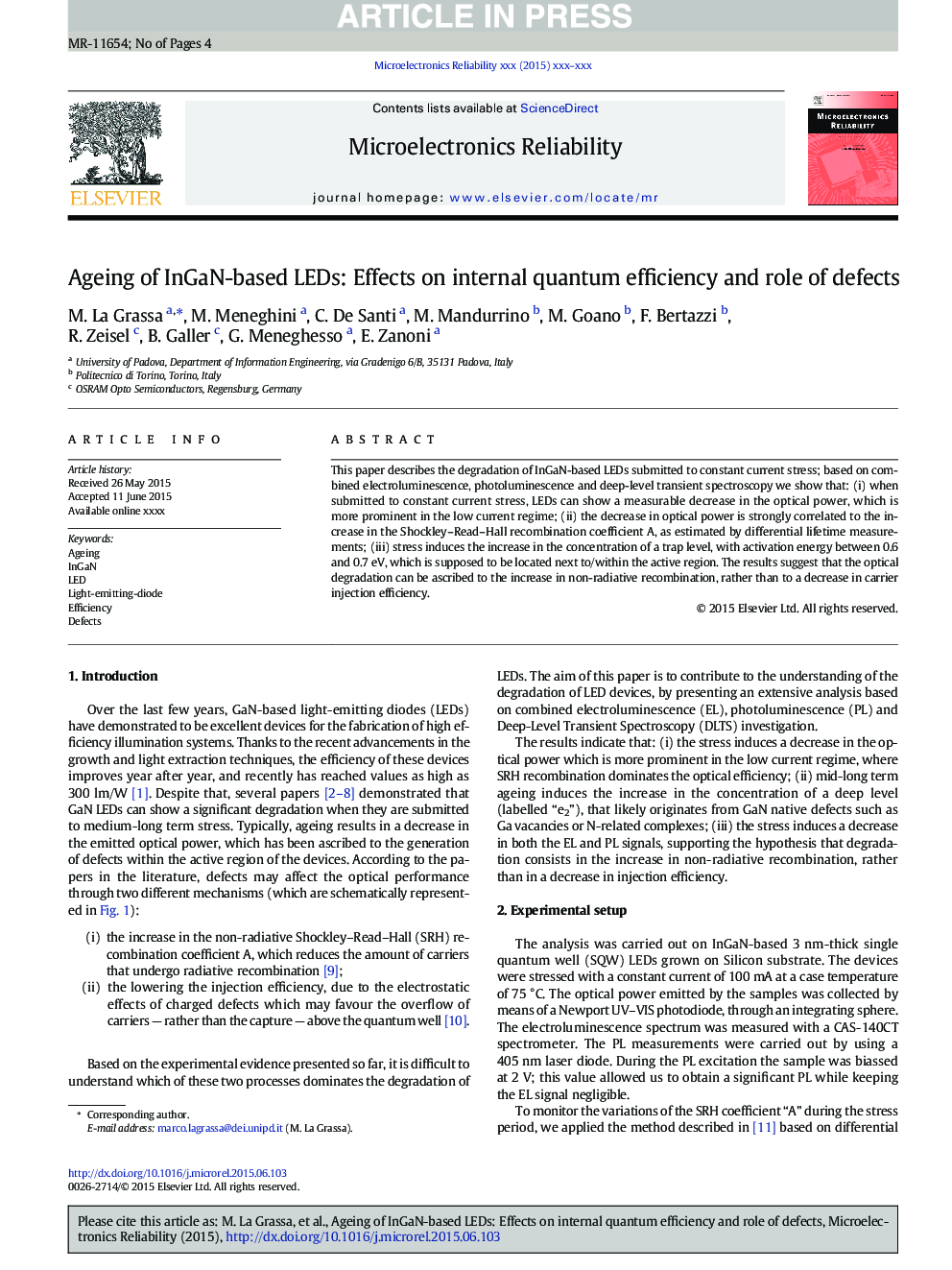| Article ID | Journal | Published Year | Pages | File Type |
|---|---|---|---|---|
| 6946830 | Microelectronics Reliability | 2015 | 4 Pages |
Abstract
This paper describes the degradation of InGaN-based LEDs submitted to constant current stress; based on combined electroluminescence, photoluminescence and deep-level transient spectroscopy we show that: (i) when submitted to constant current stress, LEDs can show a measurable decrease in the optical power, which is more prominent in the low current regime; (ii) the decrease in optical power is strongly correlated to the increase in the Shockley-Read-Hall recombination coefficient A, as estimated by differential lifetime measurements; (iii) stress induces the increase in the concentration of a trap level, with activation energy between 0.6 and 0.7Â eV, which is supposed to be located next to/within the active region. The results suggest that the optical degradation can be ascribed to the increase in non-radiative recombination, rather than to a decrease in carrier injection efficiency.
Related Topics
Physical Sciences and Engineering
Computer Science
Hardware and Architecture
Authors
M. La Grassa, M. Meneghini, C. De Santi, M. Mandurrino, M. Goano, F. Bertazzi, R. Zeisel, B. Galler, G. Meneghesso, E. Zanoni,
